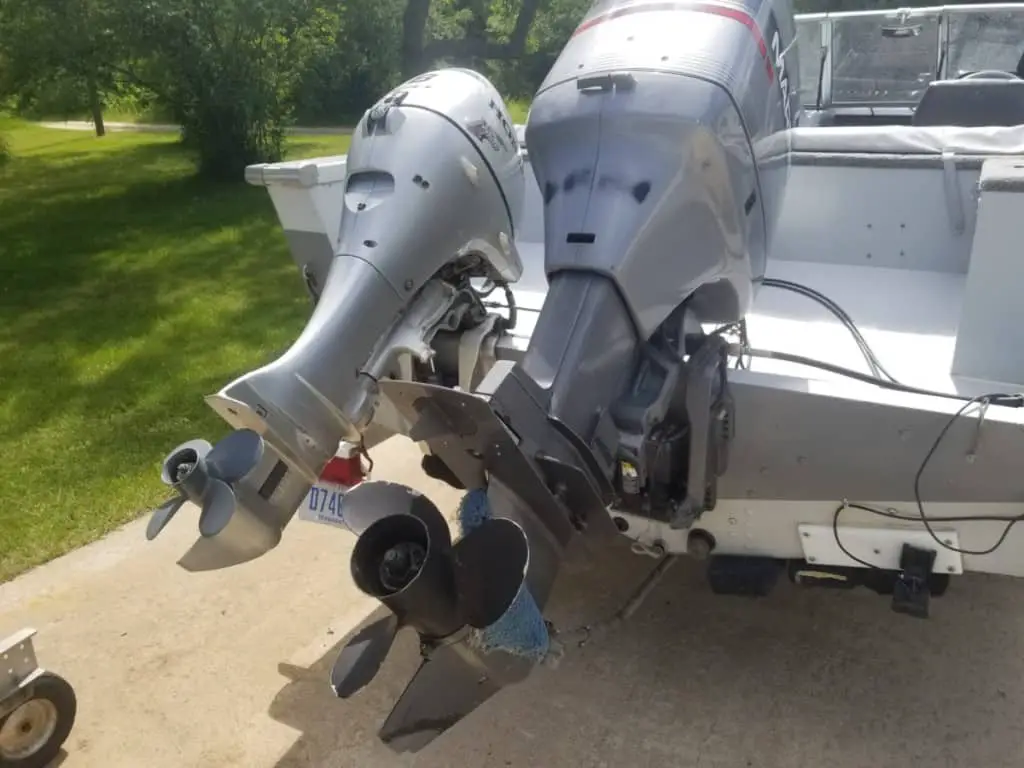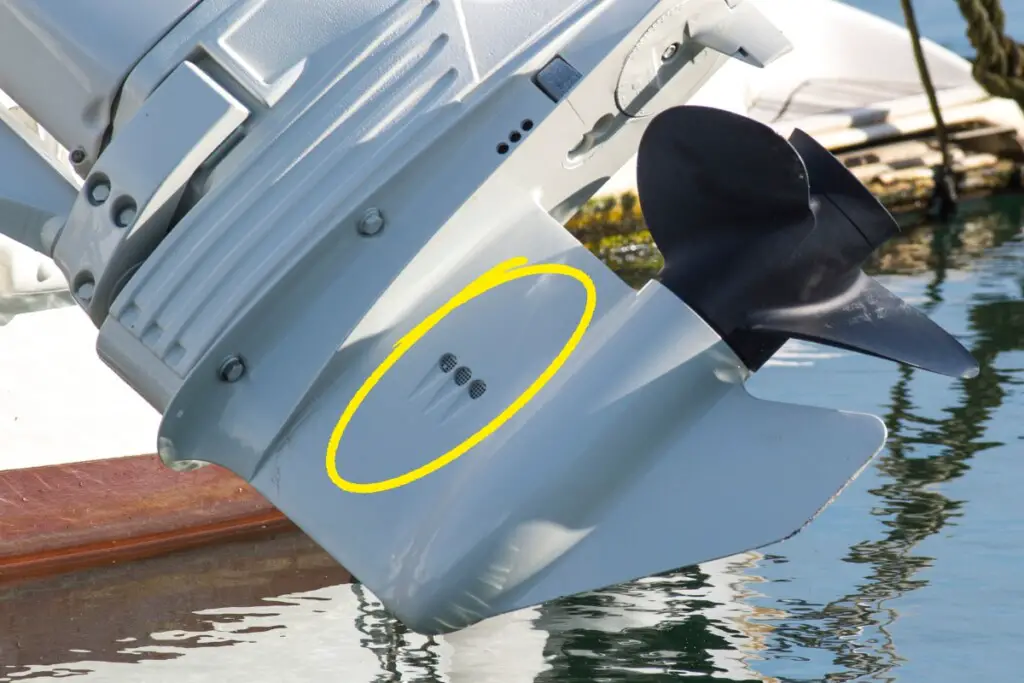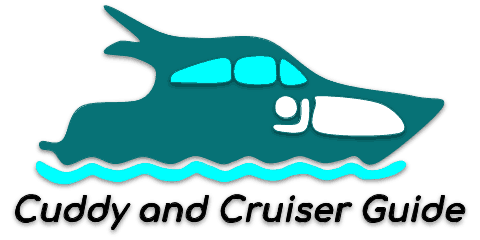Are you an avid boater, a mariner, or simply a water enthusiast who enjoys the thrill of speeding over the water’s surface with the wind in your hair? If so, you probably understand the importance of maintaining your boat’s outboard engine. It’s the heart of your boat, the driving force that breathes life into your marine adventures. But it’s not enough to just turn the engine on and off — there’s a critical maintenance routine that many boat owners tend to overlook — flushing the outboard engine.
Why is flushing so important? What does it do for my engine? And more importantly, how often should I do it? These are all great questions that every boat owner, new or seasoned, should know the answers to.
Just like a car, a boat requires regular maintenance to ensure it runs smoothly. But unlike a car, a boat operates in a much more hostile environment—water. Water, especially saltwater, can be pretty damaging to mechanical equipment. This is why flushing an outboard engine is a crucial task that you shouldn’t skip.
In this article, let’s explore what an outboard engine is, why it’s important to flush it, how to do it, and most importantly, how often you should do it. By the end of it, you’ll be armed with the knowledge you need to keep your outboard engine in prime condition, ensuring it serves you reliably for many nautical miles to come. Let’s dive in!
What is an Outboard Engine?
An outboard engine, the powerhouse of your boat, is a self-contained unit that includes an engine, gearbox, and propeller, designed to mount to the outside of the boat’s hull. It’s responsible for propelling the boat and steering it in the right direction. The picture below shows exactly what I mean.

Importance of Flushing an Outboard Engine
Flushing an outboard engine is like doing a cool down jog after running a race. It’s a preventive measure to ensure your engine remains in good condition as it helps remove salt, dirt, and sand that may have entered the cooling system during operation — just like a cool down jog will help flush lactic acid from your muscles and allow you to not feel sore the next day.
Frequency of Flushing an Outboard Engine
Many might argue about the question of how often should you flush your outboard engine?
Factors Influencing the Frequency
The frequency of flushing your outboard engine depends on several factors: usage, operating conditions (mud and silt), and the type of water you usually sail in—freshwater, brackish, or saltwater.
Basically, just use common sense. If you went to the gym and didn’t even break a sweat, you’ll probably get away with skipping a shower. If you decide to go outside and get covered in clay, dirt, and sweat as you install some new garden beds, then you’re definitely going to want to shower. The same concept applies to flushing an outboard.
Saltwater vs Freshwater Usage
If your boat is used in saltwater or brackish water, it’s recommended to flush the engine after every use to prevent salt buildup, which can lead to corrosion and potentially damage the engine. Similarly, if the boat is operated in muddy or silty water, flushing after every use can prevent these materials from clogging the cooling system.
If you’re typically boating in freshwater, then the flushing frequency can be less, perhaps after every few outings, depending on the cleanliness of the water. However, it’s still a good habit to flush the engine regularly, even in these conditions, as it helps to clear out any potential blockages in the cooling passages and ensures the engine is running at its best.
Regardless of the type of water, if the boat is used infrequently – say, once a month or less – it’s a good practice to flush the engine after every use. I typically only make it out on weekends or twice a month in the summer, so flushing the outboard is task that I perform each and every time that I return home.
Items Needed to Flush an Outboard Engine
Several products are designed to simplify and enhance the outboard engine flushing process. Here are a few recommendations from Amazon or the appropriate vendor:
Flush Muffs
Flush muffs are a popular choice among boaters, and there are various brands on the market. The Shoreline Marine Motor Flusher Dual Flow is a notable one due to its ability to simulate a more realistic engine cooling scenario by providing water flow to both sides of the water intake.

Flush Bags
When it comes to flush bags, these flush bags from Outboard Covers and Accessories are highly rated. They offer two sizes, depending on your engine type, and they are heavy-duty and easy to use.
Engine Flushing Systems
For those who want to invest in a more comprehensive solution, there are built-in flushing systems like Perko’s FlushPro™. This system allows you to safely and easily flush your engine with a simple garden hose connection.
Salt Removal Products
Additionally, you might consider a product specifically designed to remove salt and mineral deposits, like Salt-Away SA32M Concentrate Kit with Mixing Unit. This product can be used along with a flush muff or flush bag to provide a deep clean of your engine’s cooling system.
Remember, no matter what product you choose, always follow the manufacturer’s guidelines for usage to ensure the effectiveness and longevity of your outboard engine.
It’s worth mentioning that while these products can facilitate the flushing process, the most crucial factor is consistency. Regularly flushing your outboard engine — especially after every use in saltwater — is essential for its maintenance and performance.
Techniques for Flushing an Outboard Engine
There are various techniques to flush an outboard engine.
Using a Flush Bag
A flush bag is a tool that you fill with water and run the engine in, as if it’s in a mini lake of its own. This is ideal for engines that need to be run during the flushing process. I’ve even seen people use 44 gallon garbage bins as a makeshift flush bag by simply lowering the outboard into a bin that is full of water.
Here’s how you use a flush bag:
- Fill the flush bag with water. Make sure it is large enough and filled sufficiently to submerge the engine’s lower unit.
- Place your outboard engine in the bag. Make sure the water intake is completely submerged.
- Start the engine and let it run. This will circulate the clean water from the bag through the engine’s cooling system, flushing out any salt or debris.
- Once done, turn off the engine and remove it from the bag.
Note: Be sure to follow the manufacturer’s instructions regarding running time and other specifics. Some engines need to run at a specific RPM to flush effectively.
Using a Flush Muff
A flush muff is a device that you can attach to a garden hose, with rubber cups that cover the water intakes on the sides of the engine’s gear case. It allows water to flow into the cooling system without needing to run the engine.
Here’s how to flush muffs:
- Connect the flush muff to a garden hose.
- Slide the “muffs” onto the lower unit of the engine where the water intake holes are located.
- Turn on the water. Ensure water is flowing out of the engine’s “tell-tale” hole, indicating that the water is circulating correctly.
- Start the engine and let it run at idle for about 10-15 minutes.
- After flushing, turn off the engine first, then the water.
Again, remember to follow the manufacturer’s guidelines for the proper engine RPM during this process. Remember to always have the water flowing before you start the engine, and stop the engine before you turn off the water. Running your engine without water will lead to your cooling system burning up in a hurry!
Using a Built-in Flushing Device
Some outboard engines come with a built-in flushing port. This enables you to connect a hose directly to the port and flush the engine without starting it. If done when the engine first exits the water and is still hot, you’ll be able to flush the entire cooling system before the thermostat closes. If you wait too long, the thermostat will close and you’ll only be able to flush the lower half and part of the upper half.
Here’s how to use a built-in flushing device:
- Locate the flushing port on your outboard. It’s usually marked and found on the back or side of the engine.
- Connect a garden hose directly to the flushing port.
- Turn on the water and let it run for about 10-15 minutes.
- After flushing, simply turn off the water.
The Risks of Not Flushing an Outboard Engine
Failing to regularly flush an outboard engine, especially after use in saltwater, brackish water, or dirty freshwater, can lead to several potential problems that could impair the engine’s performance or lead to costly repairs.
Here’s what you can expect if you fail to regularly flush your outboard:
- Salt and Mineral Build-up: Salt and other minerals in the water can build up inside the cooling passages of the engine. This buildup can gradually restrict the flow of cooling water, leading to the engine running hotter than it should, which over time can lead to overheating and damage to engine components.
- Corrosion: Salt is highly corrosive. If left in the engine, it can corrode various parts, including the cooling passages and metal components. Corrosion can lead to leaks, impair the engine’s performance, and if left unchecked, cause significant damage requiring costly repairs or even a full engine replacement.
- Blockages: In addition to salt, an engine used in dirty or silty water can also accumulate dirt, mud, or other debris inside the cooling passages. This can cause blockages that can interfere with the engine’s cooling system, leading to overheating problems.
In essence, neglecting to flush your outboard engine can result in decreased performance, potential breakdowns, and could shorten the engine’s lifespan. Regular flushing is an important part of maintaining your engine’s health and performance over time.
Key Takeaways
Flushing an outboard engine is a crucial aspect of boat maintenance. The frequency of flushing depends on your boating environment and usage, but I recommend doing it each and every time your boat exits the water — regardless of the water type — since it takes fewer than 30 minutes from start to finish. Regular flushing helps to prolong engine life, ensure optimal performance, and avoid costly repairs.
FAQs
1. How often should I flush my outboard engine if I boat in saltwater?
If you’re boating in saltwater, it’s recommended to flush your outboard engine after each use to prevent salt buildup and corrosion.
2. Can I flush my outboard engine if it has a built-in flushing device?
Yes, if your outboard engine has a built-in flushing device, you can connect a garden hose directly to it and flush the engine without starting it. It’s best to do this at the dock, immediately after you’ve turned off the engine if possible, since the thermostat will still be open. Once the thermostat closes as the engine cools, you won’t be able to flush the top half of the cooling system like you’re able to when you use the muffs and let the thermostat open as the engine gets up to operating temps.
3. Does freshwater boating require as much engine flushing?
While freshwater is less corrosive than saltwater, it’s still recommended to flush your engine at least once a month to ensure optimal performance. Flushing after your freshwater trip is recommended if the water you’ve been in is silty or muddy.
4. What happens if I don’t flush my outboard engine regularly?
Failure to flush your outboard engine regularly can lead to the buildup of salt and debris in the cooling system, potentially causing overheating, engine damage, and reduced performance.
5. Can I use any fresh water to flush my outboard engine?
Any source of fresh water can be used to flush an outboard engine. However, it’s recommended to use a garden hose for ease and efficiency.
6. How long do I need to flush my outboard engine?
As long as the engine has been regularly flushed and excessive buildup has not occurred, a perfectly adequate time to flush an outboard engine is between 10 and 15 minutes.
